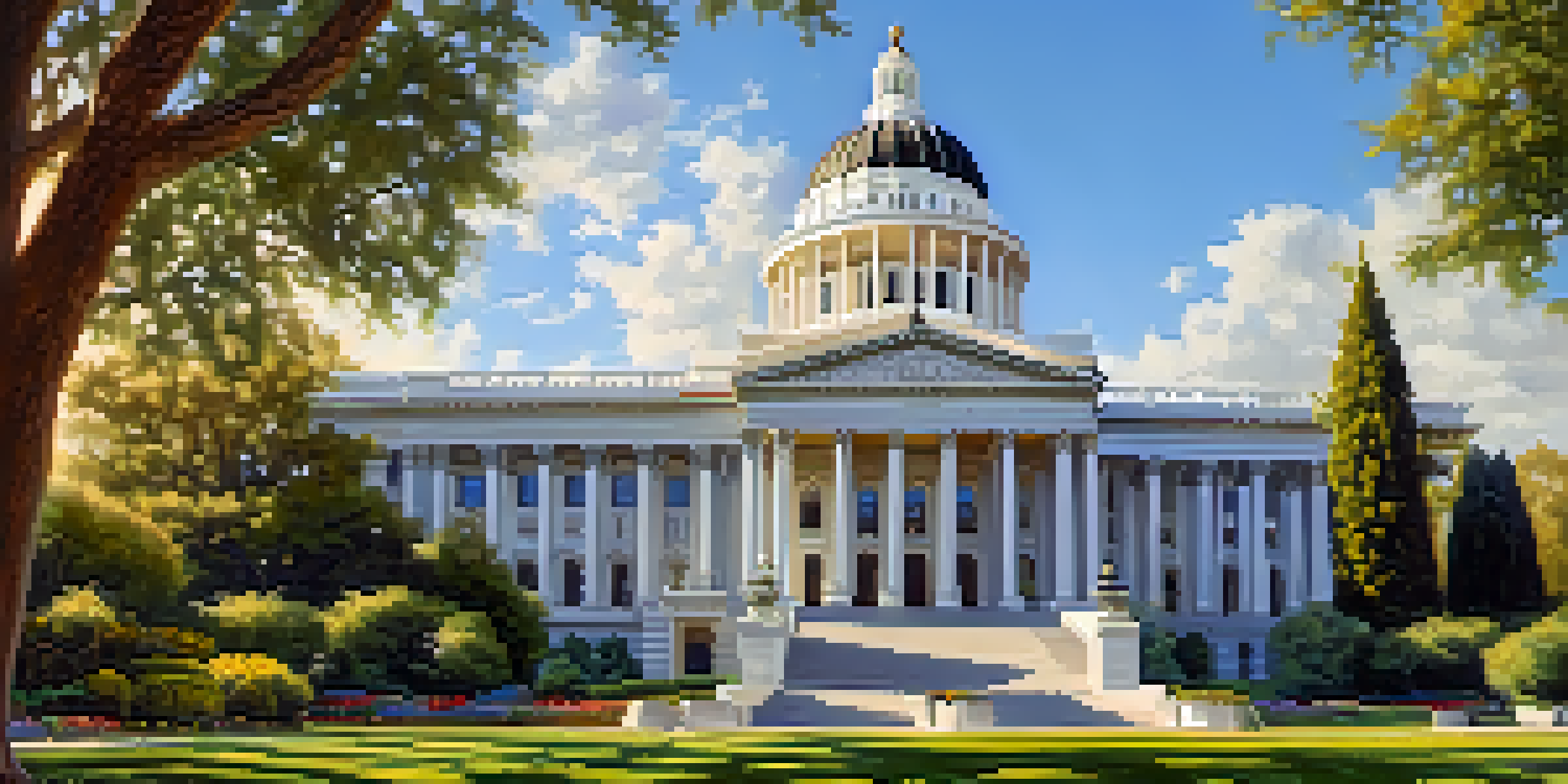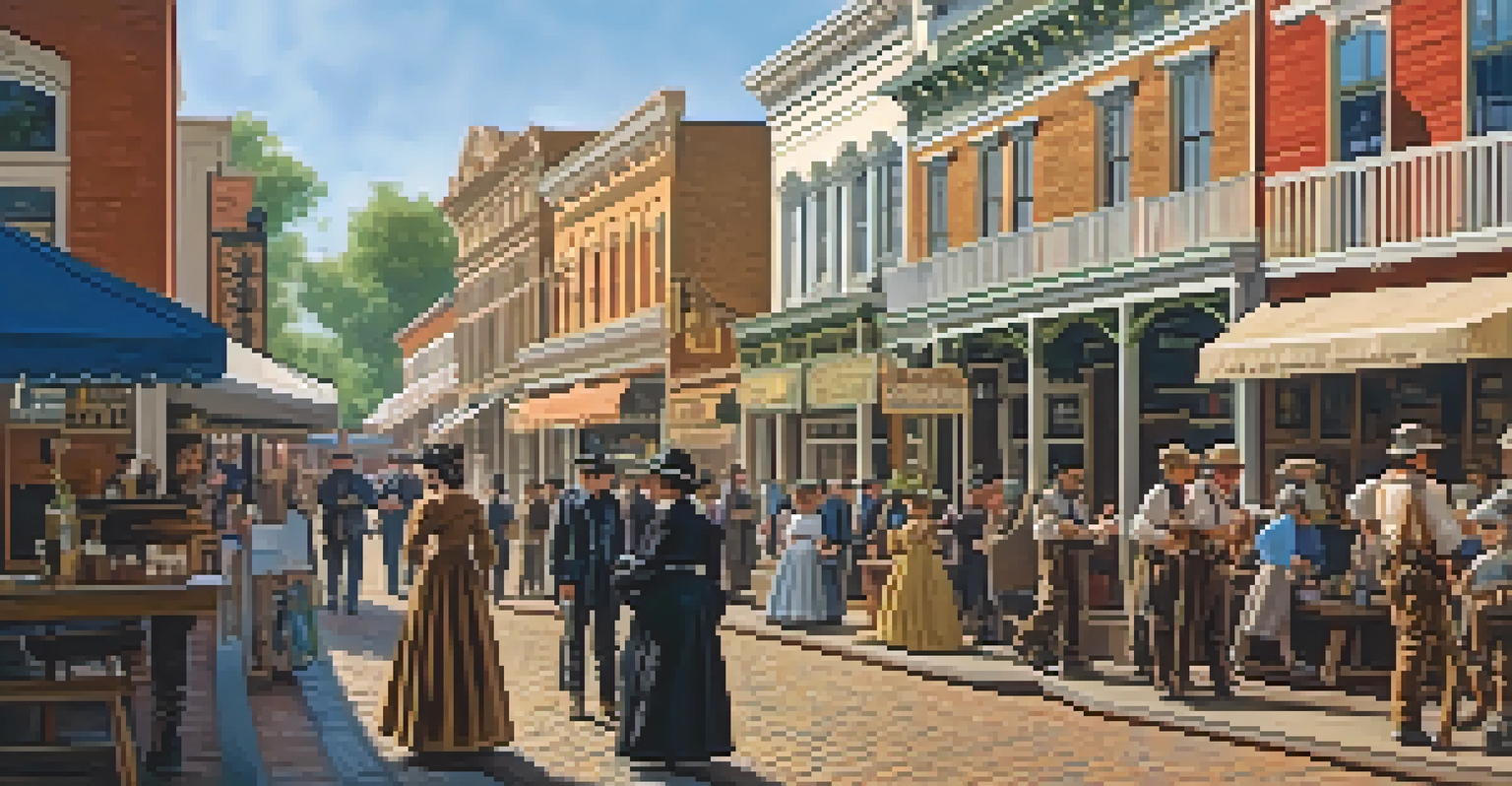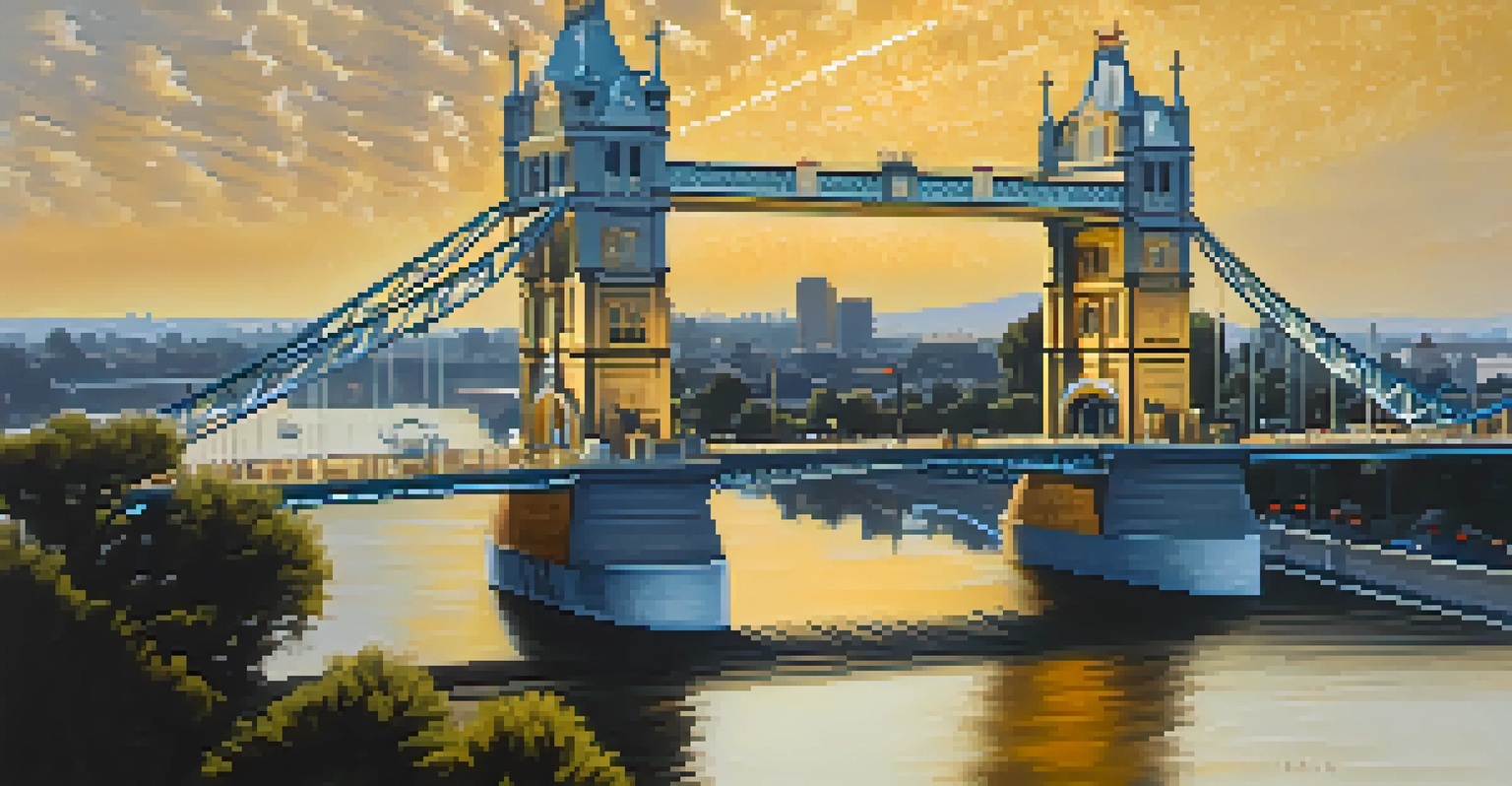Historic Landmarks of Sacramento: A Glimpse into the Past

The California State Capitol: A Symbol of Governance
The California State Capitol stands as a prominent symbol of democracy in Sacramento. Its grand architecture, completed in the late 19th century, is a testament to the state's rich political history. Visitors can explore the lush gardens and majestic dome, which is a cornerstone of the city’s skyline.
History is not a burden on the memory but an illumination of the soul.
Inside, the Capitol houses the offices of the Governor and the state legislature, making it a bustling hub of political activity. Guided tours provide insights into the legislative process and the state's history, allowing visitors to connect with California's governance in a tangible way. It's not just a building; it's where decisions that shape the state are made.
Surrounded by history, the Capitol also serves as a backdrop for numerous events and celebrations throughout the year. From protests to festivals, this landmark is a living part of Sacramento's civic life, inviting the community to engage with the very essence of democracy.
Old Sacramento: Where the Past Meets the Present
Old Sacramento is like stepping into a time machine, offering a glimpse of the Gold Rush era. This preserved historic district features wooden sidewalks and vintage storefronts that transport visitors back to the 1800s. It’s a vibrant area where history and modernity blend seamlessly, making it a must-visit for anyone curious about California’s past.

As you wander through the cobblestone streets, you can explore various museums, shops, and eateries that celebrate the city's gold rush heritage. The California State Railroad Museum, in particular, showcases the significance of railroads in shaping Sacramento’s development. This interactive experience captivates both history buffs and families alike.
California State Capitol: Democracy's Heart
The California State Capitol is a symbol of governance, showcasing the state's rich political history and serving as a hub for legislative activity.
Events like the annual Gold Rush Days further enliven Old Sacramento, featuring reenactments, live music, and local crafts. It’s an excellent opportunity for visitors to engage with the past while enjoying the present, creating lasting memories in this historic setting.
The Tower Bridge: A Modern Marvel of Engineering
The Tower Bridge is not just a crossing; it's an iconic symbol of Sacramento’s progress and innovation. Completed in 1935, this vertical lift bridge connects Sacramento to West Sacramento and is known for its striking gold color. The design reflects the Art Deco style, making it a picturesque spot for photographers and sightseers alike.
A community is like a ship; everyone ought to be prepared to take the helm.
As you walk across the bridge, you can take in stunning views of the Sacramento River and the city skyline. The bridge’s unique mechanism allows it to lift for passing boats, showcasing the blend of functionality and aesthetics. It serves as a reminder of the city's adaptability and commitment to maintaining its historical charm while accommodating modern needs.
The Tower Bridge also plays a role in various community events and celebrations, further cementing its status as a beloved landmark. Whether you’re strolling or driving, this bridge offers both a practical route and a delightful experience, merging history with the daily life of Sacramento.
Sutter’s Fort: A Historic Pioneer Settlement
Sutter’s Fort is a key piece of Sacramento’s history, founded by John Sutter in 1839. This adobe structure served as a trading post and refuge for early settlers during the tumultuous Gold Rush. Today, it stands as a state historic park, inviting visitors to explore the early days of California's settlement.
Walking through the fort, you can see exhibits that illustrate life in the 19th century, including period artifacts and reenactments. The fort’s walls tell tales of survival, trade, and community, making it an educational experience for all ages. It's a place where history comes alive, allowing visitors to appreciate the resilience of those who came before us.
Old Sacramento: A Journey Through Time
Old Sacramento immerses visitors in the Gold Rush era with its preserved historic district and vibrant events that celebrate the city's past.
Sutter’s Fort also hosts various events throughout the year, including historical reenactments and educational programs. These activities engage the community and help preserve the stories of the past, ensuring that Sacramento’s rich history continues to be celebrated and remembered.
The Governor’s Mansion: A Glimpse into Political History
The Governor’s Mansion is a striking example of Victorian architecture and an important landmark in Sacramento. Built in 1877, it has housed 13 governors, reflecting the changing political landscape of California. The mansion is not only a residence but also a symbol of the state’s governance and heritage.
Visitors to the mansion can take guided tours that reveal the opulent interiors and fascinating stories of its former residents. From beautifully furnished rooms to lush gardens, the mansion provides a unique perspective on the lives of California’s leaders. It’s a wonderful way to connect with the history of the state’s political realm.
Additionally, the Governor’s Mansion is a venue for various state events and ceremonies, further embedding it in the fabric of Sacramento’s civic life. This blend of history and ongoing relevance makes it a landmark worthy of exploration for anyone interested in California’s political narrative.
The Crocker Art Museum: A Cultural Treasure Trove
The Crocker Art Museum is the oldest art museum in the West and a jewel in Sacramento's cultural landscape. Founded in 1885, it boasts an impressive collection of California art, European masterpieces, and contemporary works. The museum's architecture itself is a blend of historic and modern styles, inviting visitors to explore its rich offerings.
As you stroll through the galleries, you’ll encounter everything from delicate paintings to striking sculptures. The museum also hosts rotating exhibitions, workshops, and educational programs that engage the community and inspire creativity. It’s a place where art breathes life into history, making it accessible to all.
Cultural Riches at the Crocker Museum
The Crocker Art Museum stands as a cultural treasure, featuring a diverse collection of art and engaging community programs that inspire creativity.
The Crocker Art Museum stands as a testament to Sacramento's commitment to the arts and education. Whether you're an art enthusiast or a casual visitor, the museum offers a welcoming space to appreciate the beauty and diversity of artistic expression.
The McKinley Park: A Historic Oasis in the City
McKinley Park is a cherished green space that has become an integral part of Sacramento’s community. Established in the late 19th century, this park features beautiful gardens, walking paths, and a pond, providing a serene escape from the urban hustle. It’s a perfect spot for picnics, leisurely strolls, or simply unwinding in nature's embrace.
The park is also home to the McKinley Park Rose Garden, which showcases over 1,600 rose bushes in full bloom. This vibrant display of colors and fragrances attracts locals and visitors alike, making it a popular destination for photography and relaxation. It's a beautiful reminder of the city’s commitment to preserving green spaces amid its growth.

McKinley Park hosts various community events throughout the year, including outdoor concerts and seasonal festivals. These gatherings foster a sense of community and highlight the importance of public spaces in urban life, making the park a beloved landmark for all who live in or visit Sacramento.